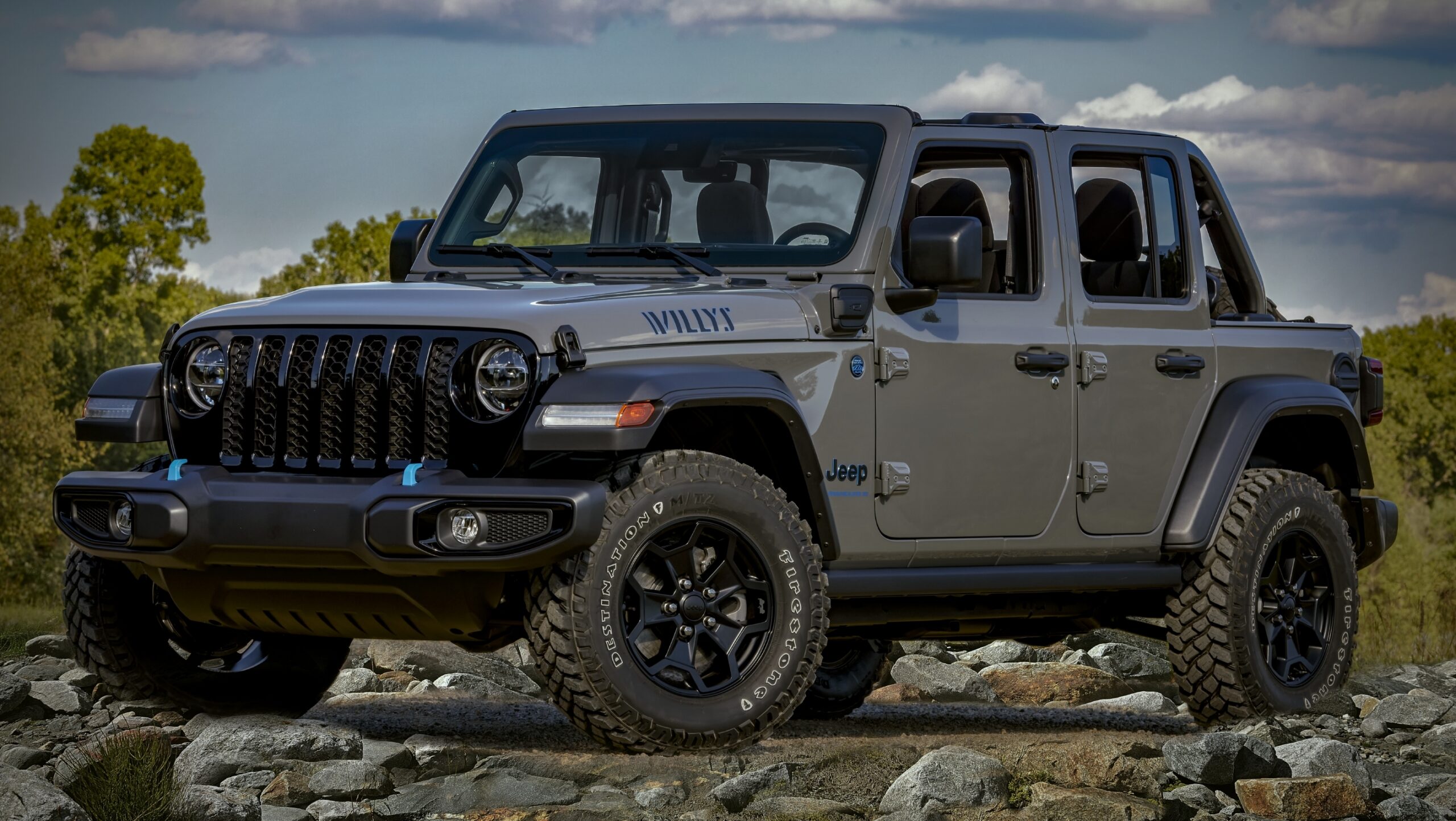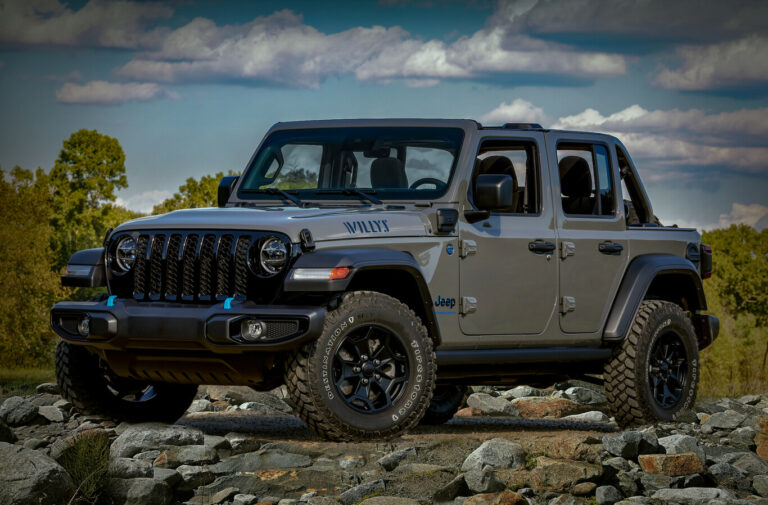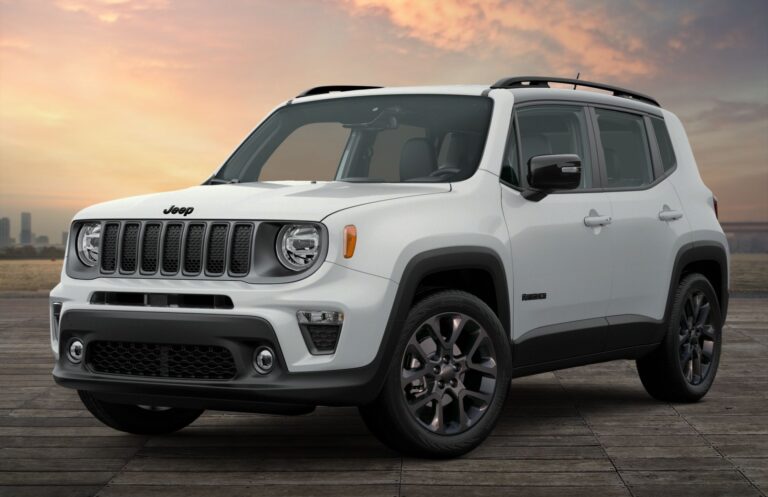Jeep Wrangler Zipper Repair: Keeping the Adventure Flowing
Jeep Wrangler Zipper Repair: Keeping the Adventure Flowing jeeps.truckstrend.com
The Jeep Wrangler isn’t just a vehicle; it’s a lifestyle. It embodies freedom, ruggedness, and the call of the open road – or no road at all. A crucial part of the quintessential Wrangler experience is its modular design, allowing for the removal of doors, tops, and windows to truly connect with the environment. At the heart of this versatility lies a seemingly small but incredibly vital component: the zipper.
Whether it’s the soft top windows, the fabric half-doors, or various storage accessories, zippers are integral to the Wrangler’s functionality and your comfort. However, these hardworking fasteners are constantly exposed to the elements – dust, mud, sun, rain, and extreme temperatures – making them highly susceptible to wear, dirt accumulation, and eventual failure. A stuck, broken, or separated zipper can quickly turn an exciting off-road excursion into a frustrating ordeal, compromising your vehicle’s weatherproofing, security, and the very open-air experience you crave. Understanding how to diagnose, repair, and maintain your Jeep Wrangler’s zippers is not just practical; it’s essential for any owner looking to preserve their vehicle’s integrity and keep the adventure flowing without interruption.
Jeep Wrangler Zipper Repair: Keeping the Adventure Flowing
Understanding Jeep Wrangler Zippers: Anatomy of a Fastener
Before diving into repairs, it’s crucial to understand the types of zippers commonly found on a Jeep Wrangler and why they might fail.
Common Zipper Locations:
- Soft Top Windows: The most common culprits. Rear and side windows on soft tops typically use heavy-duty plastic molded (Vislon) or coil zippers to attach them to the top frame or to each other.
- Soft Top Bows/Frame: Some soft tops use zippers to attach the fabric to the internal bows or frame components.
- Fabric Half Doors/Full Doors: Zippers may be used for window panels or to attach door skin components.
- Tonneau Covers & Cargo Nets: Accessories like rear cargo covers or net systems often employ zippers.
- Aftermarket Accessories: Storage bags, seat covers, and recovery gear bags also feature various zipper types.
![]()
Types of Zippers:
- Plastic Molded (Vislon) Zippers: Characterized by individual plastic teeth molded onto the tape. These are robust, resistant to corrosion, and commonly used for soft top windows due to their strength and weather resistance.
- Coil Zippers: Made from a continuous coil of nylon or polyester filament. They are flexible and less prone to breaking individual teeth but can be more susceptible to dirt accumulation within the coil. Often found on less load-bearing areas or smaller accessories.
- Metal Zippers: Less common on primary soft top components due to potential for rust and scratching, but may be found on older models or specific aftermarket parts.

Why Zippers Fail:
- Dirt and Debris: The most common cause. Dust, mud, sand, and grime accumulate in the teeth and slider, creating friction and eventually jamming the zipper.
- UV Exposure: Sunlight degrades plastic teeth and fabric tape over time, making them brittle and prone to breakage.
- Wear and Tear: Constant opening and closing, especially under stress, grinds down the slider and teeth.
- Corrosion: Metal sliders or teeth can rust, especially in humid or coastal environments.
- Improper Use: Forcing a stuck zipper, yanking, or trying to close a zipper when the fabric is misaligned can damage teeth or the slider.
- Fabric Tears: The zipper tape or surrounding fabric can tear, causing the zipper to detach or misalign.
Diagnosing Zipper Problems: What’s the Real Issue?
Accurate diagnosis is the first step to effective repair. Examine the zipper carefully:
- Stuck Slider: Does the slider move at all? Is it jammed by dirt, or is there a bent tooth preventing movement?
- Slider Separation: Does the zipper close, but the teeth separate behind the slider? This often indicates a worn or bent slider that isn’t pressing the teeth together correctly.
- Broken Teeth: Are individual teeth missing or damaged? This will create gaps in the zipper line.
- Fabric Tear: Is the zipper tape torn away from the window or soft top fabric? This is a more complex repair.
- Corrosion/Rust: Visible rust on metal components can seize the slider.
DIY Zipper Repair: A Step-by-Step Guide
Many common zipper issues can be resolved with basic tools and a little patience.
1. Cleaning and Lubrication: The First Line of Defense
- Materials: Mild soap (like dish soap), water, soft brush (old toothbrush), clean cloth, zipper lubricant (silicone spray, zipper wax/balm, beeswax, or even a graphite pencil). Avoid WD-40 or oil-based lubricants as they attract dirt.
- Process:
- Thoroughly clean the zipper teeth and slider with soapy water and a soft brush. Pay close attention to removing all visible dirt, sand, and grime.
- Rinse thoroughly with clean water to remove all soap residue.
- Allow the zipper to dry completely.
- Apply a thin, even layer of your chosen zipper lubricant to both sides of the zipper teeth. Work the slider back and forth gently to distribute the lubricant.
- Repeat cleaning and lubrication if the zipper is still stiff.
2. Fixing a Stuck Slider
- If the slider is jammed, try the cleaning and lubrication steps first.
- If still stuck, gently try to wiggle the slider. Do not force it.
- Check for any fabric caught in the slider and carefully pull it free.
- Inspect for bent teeth. If found, use needle-nose pliers to gently realign them. Be extremely careful not to break them.
3. Replacing a Zipper Slider
This is a common fix for zippers that separate after closing. The slider itself often wears out.
- Materials: New zipper slider (must match the zipper type and size), needle-nose pliers, seam ripper (optional).
- Identifying Size: Zippers have size numbers (e.g., #5, #8, #10) usually stamped on the back of the slider or indicated by the width of the teeth. Measure the width of the zipper teeth when closed to determine the size.
- Process:
- Locate the top or bottom stop of the zipper. Often, you’ll need to remove a few stitches or use a seam ripper to carefully open the fabric at one end of the zipper to expose the end of the zipper tape.
- Carefully remove the old slider using pliers if it’s still attached.
- Slide the new slider onto the zipper teeth. Ensure the orientation is correct (the wider opening of the slider goes over the teeth first). It might require some wiggling and gentle pressure.
- Once the slider is on, test its movement.
- Install new top or bottom stops (metal crimp-on stops or fabric sewn-in stops) to prevent the slider from coming off again. If you removed stitches, re-sew the area with heavy-duty thread.
4. Repairing Separated Teeth (Minor)
- For minor separations where teeth are not broken but just misaligned:
- Clean and lubricate the zipper thoroughly.
- Using needle-nose pliers, gently press the zipper teeth together where they are separating. Work slowly and methodically.
- Once the teeth appear to be re-engaged, try to move the slider back and forth a few times to test.
5. Temporary Fixes
- Zipper Pulls: If the original pull tab breaks, attach a paperclip, keyring, or small piece of cord as a temporary pull.
- Clips/Clamps: For a stubborn separation, small binder clips or even zip ties can hold the zipper closed temporarily until a proper repair can be made.
- Duct Tape: As a very last resort for weatherproofing, duct tape can be used to seal a zipper opening, but it’s not a long-term solution and can leave residue.
When to Call a Professional (or Consider Replacement)
While DIY is empowering, some zipper issues are beyond the scope of simple home repairs:
- Extensive Broken Teeth: If many teeth are missing or severely damaged, replacing the entire zipper tape is usually necessary. This involves significant sewing and often specialized equipment.
- Large Fabric Tears: If the zipper tape has torn away from the window or soft top fabric, it requires professional upholstery repair or a new panel.
- Complete Zipper Replacement: Replacing a full zipper on a soft top window or door is a complex job that requires removing the existing zipper, sourcing a new one of the exact type and length, and carefully sewing it into place. This is best left to an automotive or marine upholstery specialist.
- Cost vs. Benefit: For very old, brittle soft top windows, the cost of professional zipper replacement might approach the cost of a new window panel or even a complete soft top. Evaluate the overall condition of the component before investing in a major repair.
Preventative Maintenance for Jeep Wrangler Zippers
Prevention is always better than cure. Extend the life of your Wrangler’s zippers with these tips:
- Regular Cleaning: Make zipper cleaning part of your regular vehicle wash routine. Use a soft brush and mild soap.
- Consistent Lubrication: Lubricate zippers every few months, or more often if exposed to harsh conditions (dusty trails, coastal air).
- Gentle Operation: Never force a stuck or stiff zipper. Investigate the cause and apply lubricant.
- Proper Storage: When removing windows or the soft top, ensure zippers are clean and slightly lubricated before storing them. Store soft top windows flat or rolled carefully to avoid creasing the plastic and stressing the zippers.
- UV Protection: Use UV protectants on your soft top and windows to slow down material degradation, which can also affect the zipper tape and teeth.
Tools and Materials for Zipper Repair
Having a small zipper repair kit handy can save you a lot of hassle.
- Zipper Lubricant: Silicone spray (marine grade is excellent), zipper wax, or beeswax.
- Needle-Nose Pliers: Essential for slider replacement and tooth realignment.
- Small Flathead Screwdriver: For prying open old sliders or stops.
- Zipper Repair Kit: Often includes various slider sizes and top/bottom stops.
- Seam Ripper: For carefully removing stitches.
- Heavy-Duty Thread and Needle: For re-sewing stops or minor fabric repairs.
- Rubbing Alcohol: For cleaning stubborn residue.
- Clean Rags/Microfiber Cloths: For cleaning and drying.
- Soft Brush: An old toothbrush works well for cleaning zipper teeth.
Challenges and Solutions
- Rust/Corrosion: For metal zippers, gently scrub rust with a wire brush, then apply a rust inhibitor before lubricating. If severe, replacement is likely.
- Stiff Zippers in Cold Weather: Zippers can become very stiff in cold temperatures. Gently warm the area with a hairdryer (on low heat) or simply allow the vehicle to warm up before attempting to open/close the zipper. Always lubricate.
- Finding Replacement Parts: OEM Jeep parts can be expensive. Look for aftermarket zipper repair kits online (e.g., YKK zipper repair kits, marine zipper suppliers), auto parts stores, or even specialty fabric/upholstery shops. Bring the old slider or a measurement to ensure compatibility.
- Matching Colors/Materials: When replacing an entire zipper, try to match the original type and color as closely as possible for aesthetic consistency.
Estimated Costs for Jeep Wrangler Zipper Repair
The cost of zipper repair can vary significantly depending on the extent of the damage, whether you DIY, and if professional services are required. Here’s a general pricing guide:
| Repair Type / Component | Description | Estimated DIY Cost (Parts Only) | Estimated Professional Cost (Parts & Labor) | Notes |
|---|---|---|---|---|
| Basic Maintenance | Cleaning and Lubrication | $5 – $20 | N/A (usually not a standalone service) | Essential preventative care. |
| Stuck Slider (Minor) | Cleaning, Lubrication, Gentle Manipulation | $5 – $20 | $40 – $80 | If a professional can quickly free it. |
| Zipper Slider Replacement | Replacing a worn or broken slider on an otherwise good zipper. | $10 – $30 (for a kit) | $80 – $150 | Requires correct slider size and type. |
| Minor Zipper Teeth Repair | Realigning a few bent or separated teeth. | $0 – $10 (pliers) | $50 – $100 | Only for very minor, localized issues. |
| Full Zipper Replacement (Single Window) | Replacing the entire zipper on one soft top window panel. | $30 – $70 (for zipper tape) | $200 – $400+ | Requires significant sewing skill and time. Often cheaper to replace panel. |
| Soft Top Window Panel Replacement | Buying a brand new window panel (rear or side). | $100 – $300+ (per panel) | $100 – $300+ (per panel, labor extra if installed) | Often the most cost-effective solution for extensive window zipper damage. |
| Professional Upholstery Repair | Complex repairs, fabric tears near zipper, custom work. | N/A | $150 – $600+ (highly variable) | For specialized jobs beyond basic repair. Quotes recommended. |
| Full Soft Top Replacement | Replacing the entire soft top assembly (includes all windows and frame cover). | $600 – $2000+ | $800 – $2500+ | When multiple zippers fail, or the fabric is severely degraded. |
Prices are estimates and can vary significantly based on location, brand of parts, and specific shop rates.
Frequently Asked Questions (FAQ)
Q1: Can I use WD-40 on my Jeep Wrangler zippers?
A1: It’s generally not recommended for long-term use on plastic zippers or fabric. While it might free a stuck zipper temporarily, WD-40 is an oil-based lubricant that can attract and trap dirt, leading to more severe issues down the line. It can also degrade some plastics and fabrics over time. Stick to silicone-based lubricants, zipper wax, or beeswax.
Q2: How often should I lubricate my Wrangler’s zippers?
A2: For optimal performance and longevity, lubricate your zippers every 3-6 months, or more frequently if you regularly drive in dusty, muddy, or coastal environments. Regular cleaning should accompany lubrication.
Q3: Are all Jeep Wrangler soft top zippers the same size?
A3: No. While many soft tops use common sizes like #8 or #10 Vislon zippers, there can be variations between different models, years, and aftermarket soft top brands. Always check the existing zipper’s size or measure the width of the teeth to ensure you get the correct replacement slider or zipper.
Q4: Where can I buy replacement zipper sliders or parts?
A4: You can find them at automotive parts stores, marine supply stores (as boat tops use similar zippers), specialty zipper suppliers online (e.g., YKK distributors), or through online retailers like Amazon, Quadratec, or ExtremeTerrain that specialize in Jeep accessories.
Q5: Is it worth repairing a soft top zipper, or should I just replace the whole window/top?
A5: It depends on the extent of the damage and the overall condition of your soft top. For a single broken slider or minor issue, repair is usually cost-effective. If multiple zippers are failing, the plastic windows are cloudy or cracked, or the fabric itself is degraded, replacing the entire window panel or even the whole soft top might be a better long-term investment. Compare the repair cost to the replacement cost.
Conclusion
The humble zipper plays an outsized role in the functionality and enjoyment of your Jeep Wrangler. While seemingly minor, a failing zipper can quickly dampen your spirit of adventure. By understanding the types of zippers on your Wrangler, recognizing common issues, and mastering basic DIY repair and maintenance techniques, you can significantly extend the life of your soft top and other zippered components. Regular cleaning, proper lubrication, and gentle handling are your best defenses against zipper failure. And when the damage is beyond your skill set, don’t hesitate to consult a professional to ensure your Jeep remains watertight, secure, and ready for whatever the trail throws its way. A well-maintained zipper isn’t just about functionality; it’s about preserving the essence of the open-air, go-anywhere Jeep Wrangler experience.





